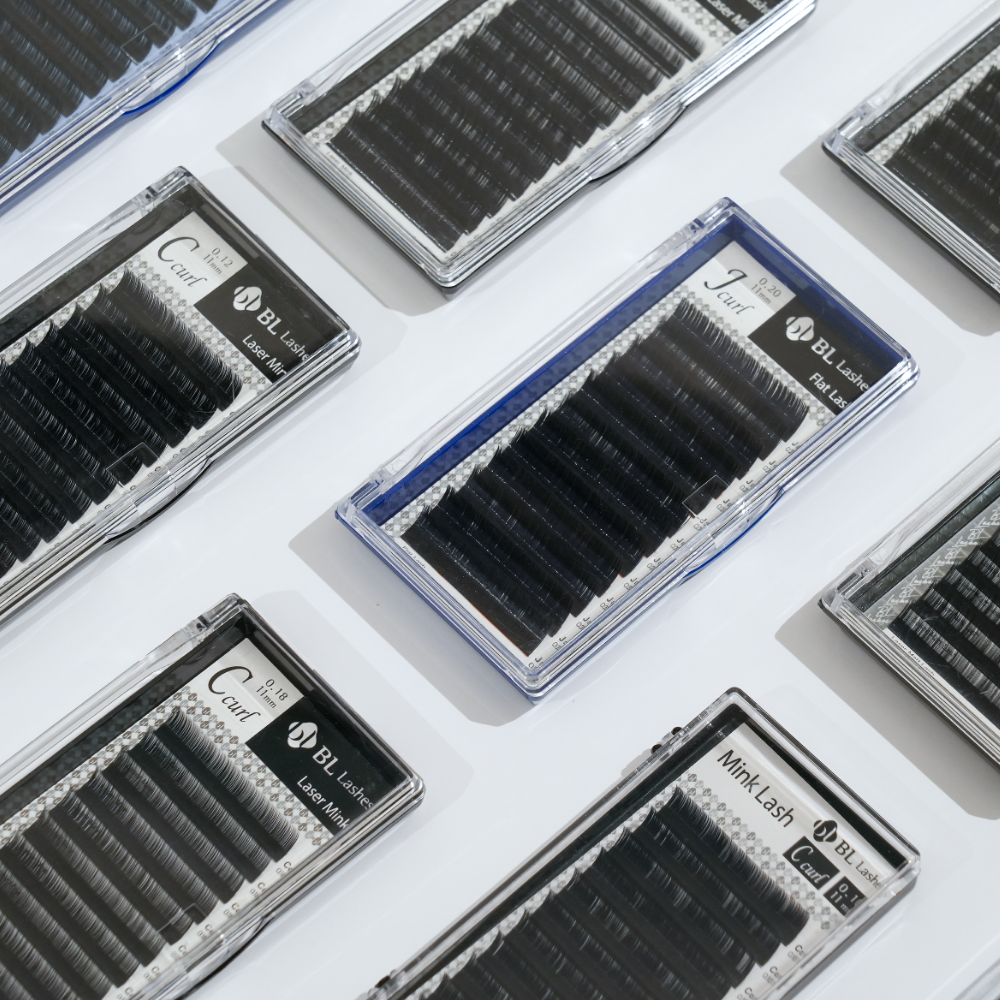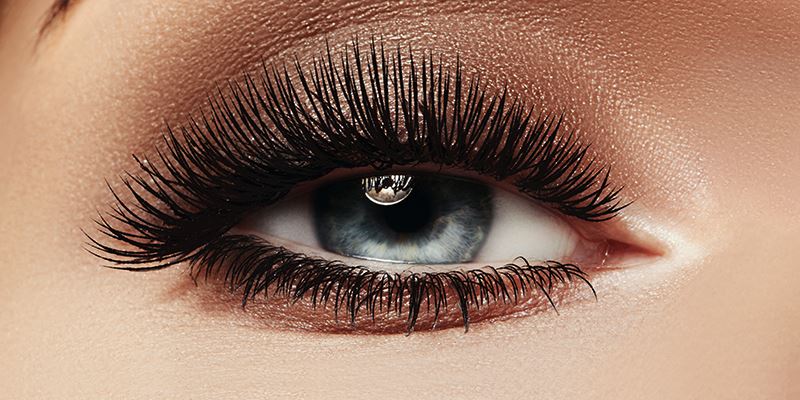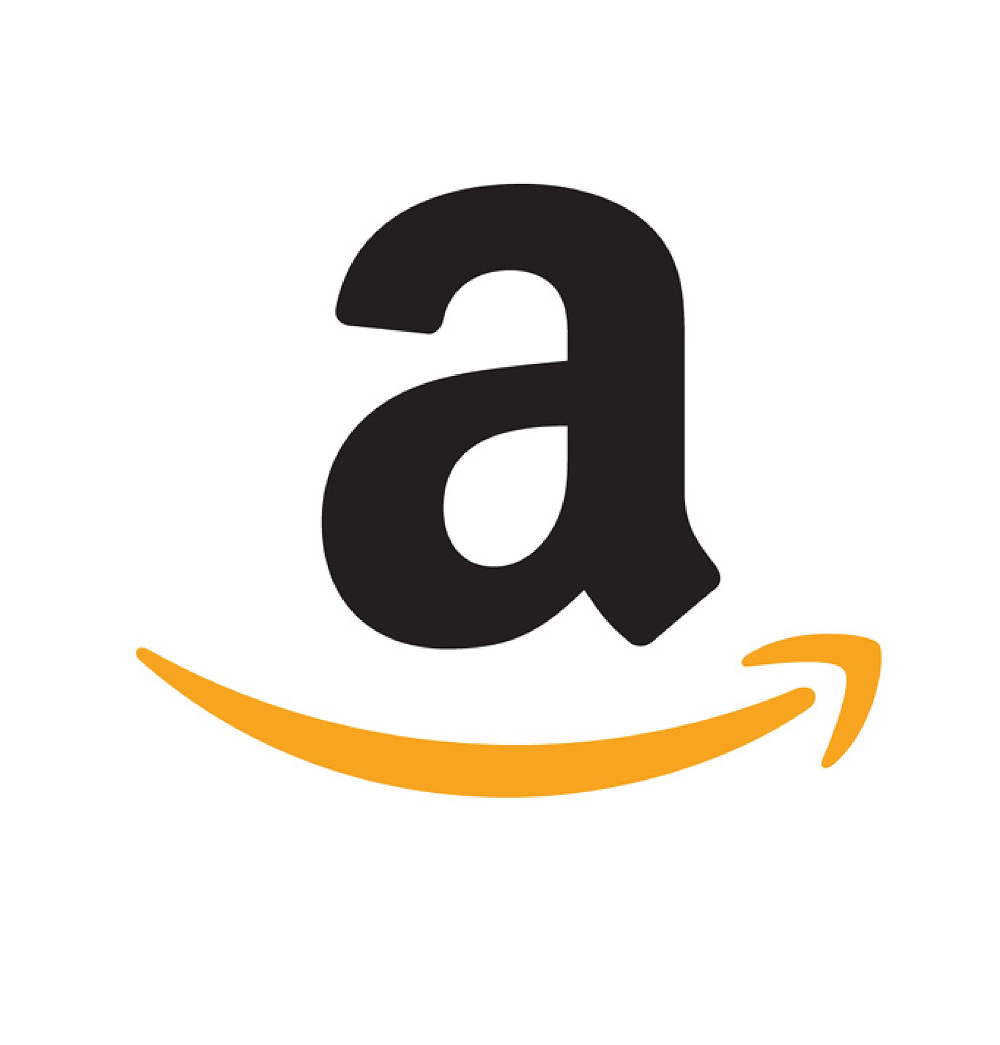As we, BL Lashes, are a Korean eyelash extension company, we feel that it is our duty to help you with everything related to Asian eyes shapes and lashes.
Eyelash Extensions for Asian Hooded or Monolid Eyes
The most common characteristic of Asian eyelid shape (monolids) is their eyelids cover eyelashes. So designing a full set lash extension for these types of eyes tends to be harder if you don’t understand the anatomy of “Asian eyes.”
Let’s find out the difference between Monolid, Double lids and Hooded Eyes!
What are Monolid Eyes?
A monolid is an eyelid shape that doesn’t have a crease. It is very common to find among East Asians (Chinese, Japanese, and Korean race).

What are Hooded Eyes?
Hooded eyes are similar to monolids, but there is a difference between the two. Hooded eyelids have a crease or a fold of skin that partially (or sometimes fully) covers the eyelid.

What are Double Eyelids?
Double eyelids have visible creases or a fold of skin that divides the eyelid into two parts and hence the name “double lids.”

For more information on each eye type refer to Lash Mapping 101: How to Create a Perfect Set Every Time
1. Asian Hooded Eyes that cover eyelashes
Eyes with folded eyelids will show the length of lash extensions you intended, but monolids will cover the top part of all eyelashes. So you should use 1~2mm longer extensions for people with monolids. Also, note that the inner corner of the lash line and the middle part of the eyelashes will get covered by heavy eyelids, so choose your design carefully.
Let's find out how the extensions will appear for each type of eyelid!

2. Suitable eyelash extension styles for Asian hooded eyelids
Natural Design (X)
Natural design is the most popular style of eyelash extensions because it most closely resembles the way our natural eyelashes grow. However, if you use the natural design for monolid clients, their eyelids will likely cover the inner and middle part of the set, which will result showing only a few lashes sticking out from the outer corner.
Therefore for the monolid clients, the “Doll eye/ Open eye” style is most recommended.
Natural design on eyes with double folds or a crease in the eyelid:

Natural design on monolids or hooded eyes: Inner & middle part of the extensions will be hidden under the hooded eyelids.

Doll Eye/Open Eye Shape Design (✓)

Even with the doll eye/open eye design, you might find that if you apply too short extensions, like 7-8mm, the eyelids can cover those- and as a result, lash extensions will disappear under the eyelids.
Choose long lashes for the inner corners than usual for the monolids clients.
2. Eyelash Extensions for Asian Eyes: Downturned eyelashes
Most of the natural lashes of monolid clients tend to grow downward as their heavier eyelids press the roots of natural eyelashes. Choosing the right curls for the downward angle eyelashes is very important.

Best eyelash extension for monolid eyes
J Curl (X)
J curl is almost straight with a slight curl at the end. If you use straight curls like J curl for downward angle natural lashes, it will result in covering the eyes and make her eyes look smaller.
C & D Curl (✓)
Choose a stronger curl like C-curl or D-curl for on Asian eyes.

L Curl & L Plus Curl (✓)
L and L Plus curls can be used for monolids, and they will result in a nice chic set.
Let us see how it appears on people with monolids.

This is what the lash style chart looks like:

Find out the best eyelash extensions for Asian eyes from here.
3. Mongoloid fold (epicanthic fold)
What is mongoloid fold, or epicanthic fold?
Wikipedia explains: An epicanthic fold is a skin fold of the upper eyelid that covers the inner corner (medial canthus) of the eye.
Many monolid eye clients will also have mongoloid folds. If a client has mongoloid folds, it will be harder for you to work on their inner corner lashes (because the lashes hide into the fold).
In this case, use a taping method to lift the mongoloid fold to work on the inner corner of the eye.
Instead of pulling the inner corner vertically with the tape, pull it along the lashline to lift the fold up more effectively. If you are pulling the inner corner lid from too far away, the taping will open your client’s eye, so work closely along the lashline.
If your client is sensitive to taping, use the tape only while you work on the inner corner and remove it immediately after.

4. Retention
Asian natural lashes are thinner, shorter, and less dense in comparison to other ethnicities, which generally leads to shorter retention of extensions.
Also, if the client has monolids, the thicker skin on her eyelids will touch the lash extensions more often, and the natural oil released from the skin can affect the retention of lash extensions. Do not forget to prep and prime your client's natural lashes at the start of the appointment with BL Lash Primer & Lash Shampoo for longer-lasting lash extensions.
As a professional lash artist, it is recommended to communicate with your client about the proper aftercare procedures. Here are some cool tips which you can give to your client.
- Use cosmetics with the least oil contained
- After makeup, use a powder to remove excess oil from the eyelids
- Use a lash coating sealant to coat lashes, so they are safe from the oil.
This blog is protected by copyright law. Reproduction or rewriting without permission is strictly prohibited.
Read more about lash extensions here:
Bottom lash extensions - How to tutorial
How to choose premade lash fans
A complete guide to eyelash extension curls, thickness and length


















